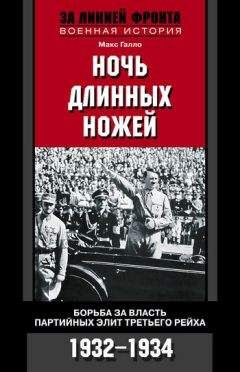Michael Dibdin - Dark Specter
Summer was always a mixed blessing for a single mother. Once school was out, the whole business of organizing the day became an exhausting exercise in logistics and scheduling. This inevitably involved her ex-husband, whose meticulously organized agendas were just one of the many hurdles she was going to face in the coming months. To make matters even worse, Kristine had just learned that Clark and Donnie Wallis were going to Europe for four months.
The Wallises owned the house that backed on to Kristine’s, and their son Brent was Thomas’s best friend. Kristine thought Brent was kind of dorky, if the truth were told, but she recognized that he and Thomas together possessed the key to a magic kingdom she would never enter. They played happily for hours on end, massaging each other’s fantasies and fears in ways that were incomprehensible to any adult, but which kept them occupied and only rarely ended in tears. Clark Wallis had confided to Kristine that the relationship with Thomas had been “really helpful with Brent’s anger management.”
So when Donnie called with the news that Clark, a systems analyst with Microsoft, was being sent to Frankfurt to oversee the installation of a new computer network for a German bank, and that she and the kids were going along, Kristine felt as if the long-threatened Seattle earthquake had arrived, demolishing some structures, rendering others unsafe, and opening up giant fissures in the texture of her life. Donnie’s interest was in finding someone to rent their house, not an easy task given the short notice and limited period of availability.
Kristine had promised to do what she could, not out of a sense of loyalty to the Wallises but because that would enable her to add a condition which Donnie hadn’t mentioned: that the prospective renters should have children, preferably boys, ideally of about Thomas’s age. She loved the Wallingford neighborhood where she lived, but its demographic mix tended to be split fairly evenly between older couples whose children had left home and younger ones whose offspring were still in diapers.
To the left of the cedar where Thomas was perched rose a gaunt telephone pole, a stripped tree trunk with metal climbing brackets imitating the vanished branches. The stave of cables running up the street was intersected by three wires strung at an angle, feeding her house and the one next door. Where they crossed, the wires appeared to thin out, as though melting into each other. One of the crows which had started infesting the neighborhood sat on an insulator, emitting raucous cries. Kristine briefly fantasized about getting her pistol from the locked drawer where she kept it and blowing the evil thing away in a shower of blood and feathers.
She knew very well that far from being evil, the crows probably fulfilled some vital function in the internal economy of the biomass, but to her they were as much intruders as the nonnative species of plants imported by nostalgic immigrants. Like holly or Scotch broom, the crows, arrogant and rapacious, seemed to symbolize other, more sinister forms of invasion which Kristine sensed at work behind the Renton massacre.
Her attempt to demonstrate that this was not an inexplicable anomaly but part of a campaign of organized killings had taken on the character of a crusade whose fervor, she knew, had made her something of a joke at work. It was true that she was overmotivated. As a native Seattleite, she felt affronted by the idea that something like this could happen here, and as a devout though lapsed Christian she was appalled that it could happen anywhere. But if she was obsessing, then her superiors, it seemed to her, were in denial.
“Close, but no cigar,” Dick Rice had replied when Kristine had given him her dog-and-pony show on the possibility of a link with the case in Kansas City.
Rice, a tough, taciturn man in his mid-forties whose first reaction to any topic was what could it do for or to his career, was head of the Criminal Investigation Division of King County Police. Kristine knew his wife, who was a pillar of the smells ‘n’ bells Episcopal church on Queen Anne Hill which she attended on the increasingly rare occasions when the urge took her, and she had taken advantage of this to go straight to the top.
“OK, so they both bought the same kind of shoes. BFD. You know how many pairs of those Nikes they sell every year?”
“The gun was the same too,” Kristine put in defensively, and immediately regretted it.
“The same caliber,” Rice shot back. “We don’t even know it was a six-shot or automatic, never mind the make or model.”
“And the shells, and the tape, and the handcuffs …”
Rice stared at her for a moment with his wary, reptilian eyes. Then he shook his head.
“I took a course, Kristine, statistical theory? They got some numbers-butt from UW in to explain the whole thing. One of the things he did, he gave us these lists of random numbers and got us to see if any of them had any significance in terms of our lives. And it was just amazing! One guy found his complete date of birth, another got almost all his phone number, someone else found his social security plus his daughter’s age. But none of it means a damn thing. They’re just strings of numbers churned out by a computer someplace.”
Rice tapped the memo which Kristine had sent him.
“It’s the same with this. Sure, you’ve found a few corresponding features in one other case among the hundreds of thousands reported all over the country every year. You know what? It would be amazing if you hadn’t. If we asked HITS to run a search for homicide victims with green eyes, a birthday in March, fallen arches and a grandparent living in Spokane, I bet it would come up with a few matches. That’s because computers are so smart they’re dumb enough to answer any question you ask them. What I’m saying, even if you came up with half a dozen matches a lot tighter than this, you’d still be well within the statistical norm. And since you’re pitching this KC job so hard, I take it you didn’t.”
Kristine Kjarstad looked away, conceding the point. Initially, she had been optimistic about the outcome of computer searches, both at state and federal level. In fact it had been the routine chore of filling out the mandatory HITS form on the Renton killings which had originally forced her to confront her growing doubts about the way the case was being handled.
All police and sheriffs’ departments in Washington State were required to submit information on murders, attempted murders and predatory sex offenses to the computerized Homicide Investigation and Tracking System run by the state attorney general’s office. The paperwork was supposed to take thirty minutes to complete, but in this particular case Kristine had spent over an hour puzzling out the most appropriate answers. The basic facts were easily transcribed from her full report: the date and time parameters, victim characteristics and background, method of operation, cause of death and forensic details. Things started to get tricky at the section headed INCIDENT CLASSIFICATION.
There were thirty-two choices, ranging from “Heat of anger” and “Drug-related” to “Psychopathic” and the chilling “Fun/amusement.” Confronting this list, Kristine quickly realized that she could check five or six completely different categories, each of them as plausible as the others. Was it “Domestic violence” or “Serial/possible serial”? “Hate” or “Cult (ritualistic)”? “Conspiracy” or “Mental/ insane”? She finally opted for “Unable to determine.”
But when she came to the next question-“Based on your experience and the results of the investigation of this case, do you believe this offender has killed before?”-she found herself, after a considerable struggle, marking “Yes.” It took even longer to complete the sentence “Evidence suggests the victim in this case is …” Here she hesitated still longer, before choosing response three, “a victim in a possible series.” And the pattern which had been lying dormant in her mind finally became clear when for “Victim-offender relationship” she passed over “Spouse,” “Family member (other,” “Friend,” “Acquaintance (business, drugs, etc)” and checked “Total stranger.”
Data submitted to HITS was not only entered into that system but also automatically generated a parallel report which was transmitted to the FBI’s Violent Criminal Apprehension Program, there to be matched against similar incidents reported from other states. Kristine Kjarstad had nourished high hopes that this process would provide her with evidence to support her tenuous and largely intuitive theory about the Renton case, but there had been no response, either from HITS or VICAP.
“The problem is, the system isn’t complete,” she had protested to her chief of detectives. “It isn’t mandatory for LEAs to submit data, and a lot of them don’t. New York, California, Texas-some of our biggest violence producers don’t even participate. We do, so anyone who looked at the VICAP stats would end up thinking that the Northwest is the murder capital of America, which is absurd. Plus any cases which are “solved,” quote unquote, get wiped from the Feds’ system! So if the original investigators in Peoria or wherever decide, rightly or wrongly, that it was just an attempted robbery gone ballistic or a family feud or a gang-related hit, whatever, it won’t show on the computer. And that must happen all the time. After all, we almost wrote this one off as a domestic.”
“Which I still think it was,” Dick Rice replied calmly. “OK, so we can’t make a case against the guy … What’s his name?”
“Wayne.”
“Right. That doesn’t mean he didn’t do it. He confessed, for Christ’s sake! That makes sense to me. We buy into this idea of yours, what’ve we got? Some guys hit a house here in Renton, then hop on a plane to Kansas and start over. That’s not the way multiple killers operate. They work their territory, wherever it may be. Look at our Green River guy. He killed at least forty-one women, maybe fifty, and all between here and Tacoma. He didn’t waste his time racking up Frequent Flyer points.”
“Bundy moved around,” Kristine objected.
“Only because he was moving anyway. Utah, he went to law school. Florida, he was on the run after busting out of Aspen. As long as he was living here, this’s where he hit ’em up. Didn’t even bother to change his MO, just kept working the campus. Whereas you want us to believe that there are these guys flitting around the country like sales reps, shooting up houses at random from sea to shining sea. I’m sorry, Kristine. I appreciate your enthusiasm and dedication, but this just doesn’t fly.”
Coming from a man who had served on both the Bundy and Green River task forces, Rice’s words had a certain authority, but Kristine Kjarstad still retained a blind, dogged faith in her idea. What really disturbed her was something that Fred Poison said when she called him to get his views on the file she had sent him in return for the one on the Kansas City murders. Poison hadn’t been any more impressed than Rice by the alleged similarities between the two cases, but his parting words had stuck firmly in Kristine’s mind.
“I’m pretty sure you’re wrong about this, Ms. Kjarstad. I certainly hope so. Because if someone is doing what you say, then it’s theirs to screw up.”
A plane roared overhead, banking into the approach path to Sea-Tac airport. Off to the west, another was moving in toward the city, its landing lights glowing brightly against the bank of cobalt cloud which dwarfed the mountains of the Olympic Peninsula. Above the clouds, another point of light, unmoving, pricked the gathering dusk: Venus.
Kristine thought of all the other planes which must be taking off and landing just then, all over the country. Someone had calculated that at any given moment one and a half million Americans were in the air. Add to that millions more in cars, buses and trains, and you had a continual flow and counterflow from city to city, state to state, coast to coast. It was as if the original impact of the Mayflower on Plymouth Rock had set up a shock wave across the whole continent, amplified by the later waves of immigrants.
For a time, all that energy had been channeled into the epic drive west. Now, thrown back on itself, it produced only this ceaseless turbulence, millions and millions of people perpetually on the move. And somewhere amongst them, perhaps, were two men equipped with.22-caliber revolvers, plastic handcuffs and rolls of duct tape. Sitting on her porch in the quiet evening, Kristine felt an immense weariness run through her. Fred Poison was right. As long as they didn’t make a mistake themselves, such killers would be virtually immune to detection.
Because beneath the superficial restlessness which the European immigrants had brought lay the very different America of the native peoples: rooted, tribally based, rich in local traditions, fiercely independent. That culture had been destroyed, but its ghosts had come back to haunt the one that replaced it. Every town and city jealously defended its rights and privileges against the county authorities, which in turn resented any interference by the state, and all made common cause against the federal government. As a result, law enforcement was divided among thousands of different agencies, each operating independently of the others and responsible only to their own elected officials.
Most of the time this worked pretty well, since most crime is local too. But if someone took it into his head to exploit that gaping fissure between the two Americas, by committing random, motiveless crimes all over the country, he could just disappear right into it. He would be operating nationally, and there was no national police force.
People thought there was, of course. A diet of thrillers and movies had convinced them that whenever the local cops hit a case that was too big for them to handle they simply called in a glamorous FBI special agent played by Kyle McLachlan or Jodie Foster, who promptly sorted the whole thing out. In fact the Bureau had no power to investigate murder, for the simple reason that murder was not a federal offense. The Feds could only muscle in if they could demonstrate that the killings were linked to crimes which were, such as kidnapping or racketeering. Otherwise all they were empowered to do, and then only on request, was to send a representative from the Behavioral Science Unit at Quantico to liaise with local police on a consultative basis. Responsibility for the investigation itself remained with the law enforcement agency having jurisdiction in the area where the murder occurred.
In theory, of course, such agencies were supposed to cooperate fully with each other, sharing information and pooling resources. Sometimes it worked out that way, other times it didn’t. But even discounting the usual rivalries, how could a pattern emerge if each part of the emerging puzzle was in the hands of a different player, each of them unaware that the others existed, and struggling to make sense of their own individual fragment?
A rustling in the branches above her brought Kristine’s thoughts back to the present. There was Thomas, clambering nimbly down the tree to finish with an athletic leap into the yard, rushing up to hug her and bug her, demanding food and attention. As they stepped inside the warm, well-lit, wood-sprung house, Kristine promised herself that tomorrow she would lock the file away and devote herself to other work. Maybe she should phone Paul Merlowitz. He still seemed interested in her enough to want to take her out to lunch. It might even be worthwhile mentioning the Wallis house to him. Lawyers knew loads of people. It would make all the difference if Thomas had someone to play with over the summer vacation.




